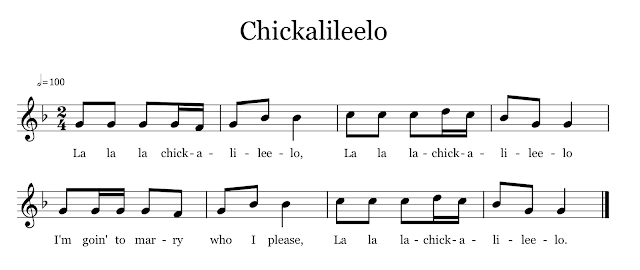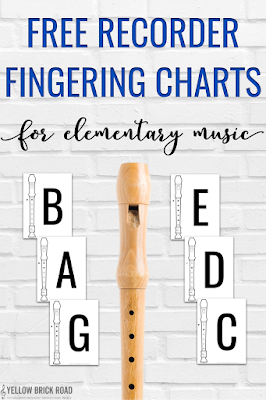Last year I wrote a post all about how I taught recorder, and I featured a free printable of the ridiculous phrases I used to help my students remember posture and technique. If you don’t want to “burn your back on the lava”, you’ll definitely want to read that post here: Teaching Recorder Basics.
Today I’ll be revisiting the recorder with some lesson ideas using the song Chickalilleelo.
PLAYING ON RECORDER & ORFF
Due to the pentatonic melody and simple rhythms, this song would be great to play on recorders as well as barred instruments. Try partnering them off and asking them to “figure out” how to play the first four measures of the song (on recorders or barred instruments). If the students are playing Orff instruments, they can flip the mallets around while playing to reduce noise. Students playing recorders can take turns singing and playing to help with the noise level. Through singing and playing, students will be able to self-correct because of the song’s familiarity. Once most of the students are able to play the first four measures, gather together the whole class to play through the last four measures, which are almost an exact repeat of the beginning.
A reader who enjoyed one of my recorder fingering charts, recently asked if I had more like it. So, I decided to make a full version of the freebie that was featured on my blog last year. Click on the image below to download a set of fingering charts in black and white. You can get my full version with bright colors HERE.
ENSEMBLE
Now that your students can both play and sing the song, you can try adding in some rhythm instruments to create a full ensemble. Split the class into three groups (recorder/Orff, rhythm instruments, and singers/movers). The rhythm students can play the beat through the verse until the final phrase, in which they’ll switch to the familiar rhythm pattern found in “chickalileelo”. If you notice any part of the ensemble struggling, try forming the group into a circle so that they’re all facing each other. Sometimes it helps struggling students keep on track when they’re able to watch other group members for visual cues.


